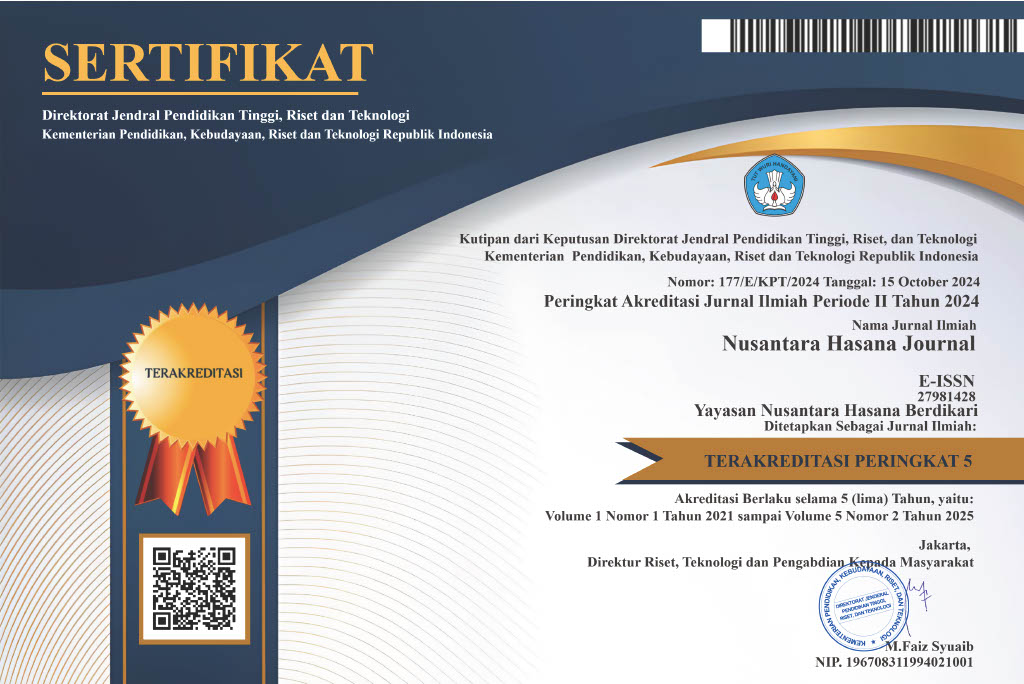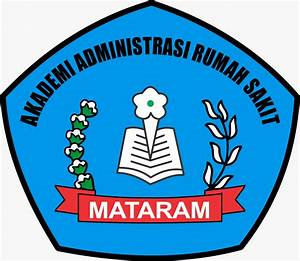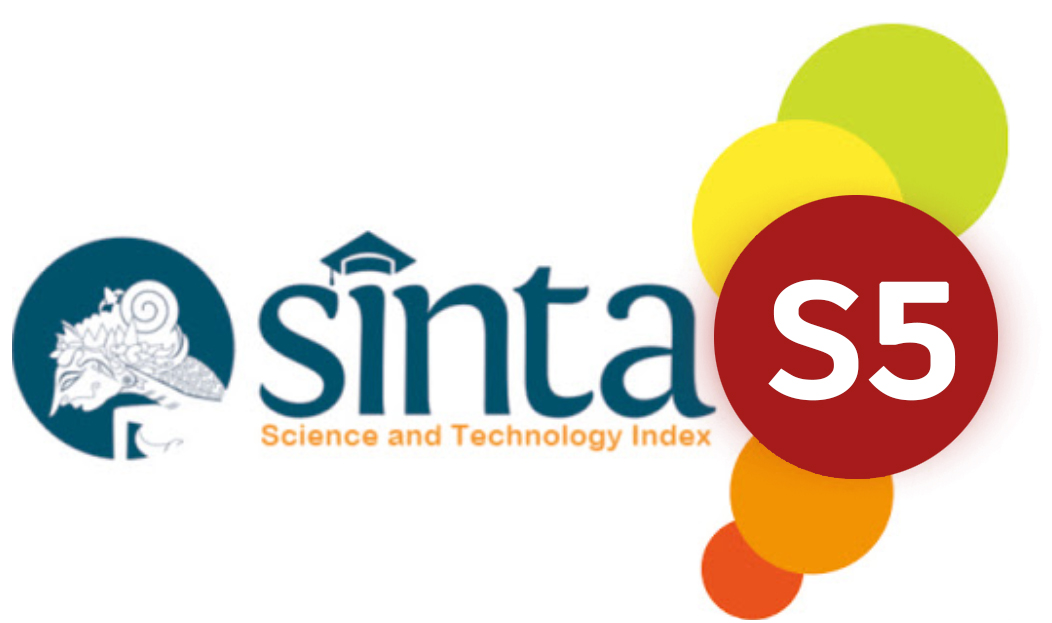PENGARUH PEMBERIAN BERBAGAI DOSIS (PGPR) DARI AIR CUCIAN BERAS PADA PERTUMBUHAN DAN HASIL TANAMAN PAKCOY (Brassica rapa L.)
DOI:
https://doi.org/10.59003/nhj.v5i2.1538Keywords:
Pakcoy, PGPR, Rice Washing WaterAbstract
Pakcoy (Brassica Rapa L.) is a type of vegetable that has a lot of nutritional content, including protein, vegetable fat, carbohydrates, fiber, Ca, Mg, Fe, sodium, vitamin A and vitamin C. and the cultivation technique of pakcoy vegetables is very easy to develop and is widely used by those who like and utilize it. In addition, it is also very potential for commercial and has very good prospects. One important technique to increase pakcoy plant production is by providing PGPR rice washing water. The purpose of this study was to determine the effect of providing various doses of Plant Growth Promoting Rhizobacteria (PGPR) from rice washing water on the growth and yield of pakcoy plants, then to determine the best dose of PGPR rice washing water for the growth and yield of pakcoy plants. This study was conducted using 1 factor RAL consisting of 5 levels, namely P0: No treatment (control) P1: PGPR Rice washing water 500 ml/plant P2: PGPR Rice washing water 1000 ml/plant P3: PGPR Rice washing water 1500 ml/plant P4: PGPR Rice washing water 2000 ml/plant, by conducting further tests using DMRT on significantly different results. The results of the analysis had a significant effect on the observation variables of plant height Week 1, number of leaves Week 1, number of leaves Week 2, crown width Week 4, stem diameter Week 2,3,4 and had no significant effect on plant height 2,3,4,5 and crown width. Then it had a very significant effect on the number of leaves Week 5, stem diameter Week 1 and stem diameter Week 5.
Downloads
References
Abdurrosyid. (2019). Cara Menyemai Benih Pakcoy. Kampustani.com. Website: https://www.kampustani.com/. [Diakses pada 8 Desember 2024].
Abidin. (2015). Pengaruh perlakuan kombinasi media terhadap pertumbuhan sawi pakchoy (Brassica rapa L.). Jurnal Silvikultur Tropika. 3 (2) : 81-84.
BPS. (2023). Data Statistik Produktifitas Sayuran di Indonesia. Website: https://www.bps.go.id/ [Diakses pada 5 Desember 2024].
Figuiredo. M.,Seldin. L. Araujo. F. & Mariano. R. (2010). Plant Growth Promoting Rhizobacteria: Fundamental sand Application. Microbiology Monographs (18). website: https://media.neliti.com/.
Haryanto, E., T. Suhartini., E. Rahayu & H. H. Sunarjono. (2007). Sawi dan Selada. Jakarta: Penebar Swadaya.
Haryanto. (2001). Pengaruh Komposisi Media Tanam Terhadap Pertumbuhan Dan Hasil Tanaman Sambiloto (Andrographis paniculata, Nees).
Jannah, M., Jannah, R., & Fahrunsyah. (2022). Kajian Literatur: Penggunaan Plant Growth Promoting Rhizobacteria (PGPR) untuk Meningkatkan Pertumbuhan dan Mengurangi Pemakaian Pupuk Anorganik pada Tanaman Pertanian. Jurnal Agroteknologi Tropika Lembab, 5(1), 41–49.
Kalsum,U., S. fatimah, & C. Wosonowati. (2011). Efektivitas Pemberian Air Leri Terhadap Pertumbuhan Dan Hasil Jamur Putih (Pleurotus ostreatus). AGRIVIGOR, 2 (4): 86-92.
Mardilla, M., & Pratiwi, A. (2021). Budidaya Tanaman Pakcoy (Brassica Rapa Subsp. Chinensis) Dengan Teknik Vertikultur Pada Lahan Sempit Di Kelurahan Penaraga Kecamatan Raba Kota Bima. Jurnal Pengabdian Magister Pendidikan IPA, 4(1).
Nurawalia, Lulu. (2023). Pertumbuhan dan Produksi Tanaman Pakcoy (Brassica Rapa L.) Hidroponik dengan berbagai Sumber Nutrisi dan Tanaman Refugia (Tagetes Erecta L.)
Prasasti. D., E. Prihastanti & M. Izzati. (2014). Perbaikan Kesubaran Tanah Liat dan Pasir dengan Penambahan Kompos Limbah Sagu Untuk Pertumbuhan dan Produktivitas Tanaman Pakcoy (Bracissca rapa var. Chinensis). Buletin Anatomi dan Ilmiah Peternakan. 1(1):365-373.
Rizal, S. (2017). Pengaruh nutriasi yang diberikan terhadap pertumbuhan tanaman sawi pakcoy (Brassica rapa l.) Yang ditanam secara hidroponik. Sainmatika: Jurnal Ilmiah Matematika dan Ilmu Pengetahuan Alam, 14(1), 38-44.
Rukmana, 2011. Meningkatkan hasil panen dengan pupuk kandang kambing pada pertumbuhan dan hasil tanaman pakchoy (Brassica rapa L.). J. Produksi Tanaman. 4 (5) : 35-41.
Setyaningrum, H. D & Saparinto, C. (2011). Panen Sayur Secara Rutin di Lahan Sempit. Jakarta: Penebar Swadaya.
Sunarjono, Hendro. (2013). Bertanam 36 Jenis Sayur. Jakarta : Penebar Swadaya.
Sutirman. (2011). Pakcoy (Sawi Sendok) Organik – Bisnis Sayuran Menguntungkan. Gunadarma. Jogjakarta.
Syamsiah, M. & Rayani. (2014). Respon Pertumbuhan dan Produki Tanaman Cabai Merah (Capsicum aanum L.) terhadap Pemberian PGPR Plant Growth Promotiong Rhizobacteria) dari Akar Bambu dan Urin Kelinci. Jurnal Agroiscience. 4(2): 109-114.
Syamsuddin, L., Chitra, & Rahmat. (2021). Respon Pertumbuhan dan Hasil Tanaman Pakcoy (Brassica Rapa L.) terhadap Pemberian Dosis Air Cucian Beras. AGROTEKBIS, 9 (6) : 1383-1389.
Wahyudi, A. T. (2009). Rhizobacteria Pemacu Pertumbuhan Tanaman: Prospeknya sebagai Agen Biostimulator & Biokontrol. Nano Indonesia. file:///C:/Users// Downloads/568-1692- 1-PB.pdf.
Wulandari, C., Muhartini, S., & Trisnowati, S. (2011). Pengaruh Air Cucian Beras Putih dan Beras Merah terhadap Pertumbuhan dan Hasil Selada (Lactuca sativa L.). Agrovigor (1), 2–3.
Downloads
Published
How to Cite
Issue
Section
License
Copyright (c) 2025 Kurnia Ningrum

This work is licensed under a Creative Commons Attribution-NonCommercial-ShareAlike 4.0 International License.
NHJ is licensed under a Creative Commons Attribution-NonCommercial-ShareAlike 4.0 International License.
Articles in this journal are Open Access articles published under the Creative Commons CC BY-NC-SA License This license permits use, distribution and reproduction in any medium for non-commercial purposes only, provided the original work and source is properly cited.
Any derivative of the original must be distributed under the same license as the original.
























